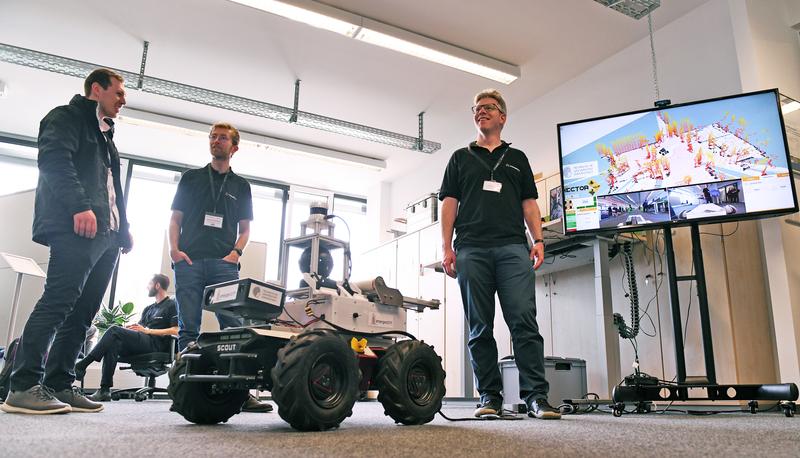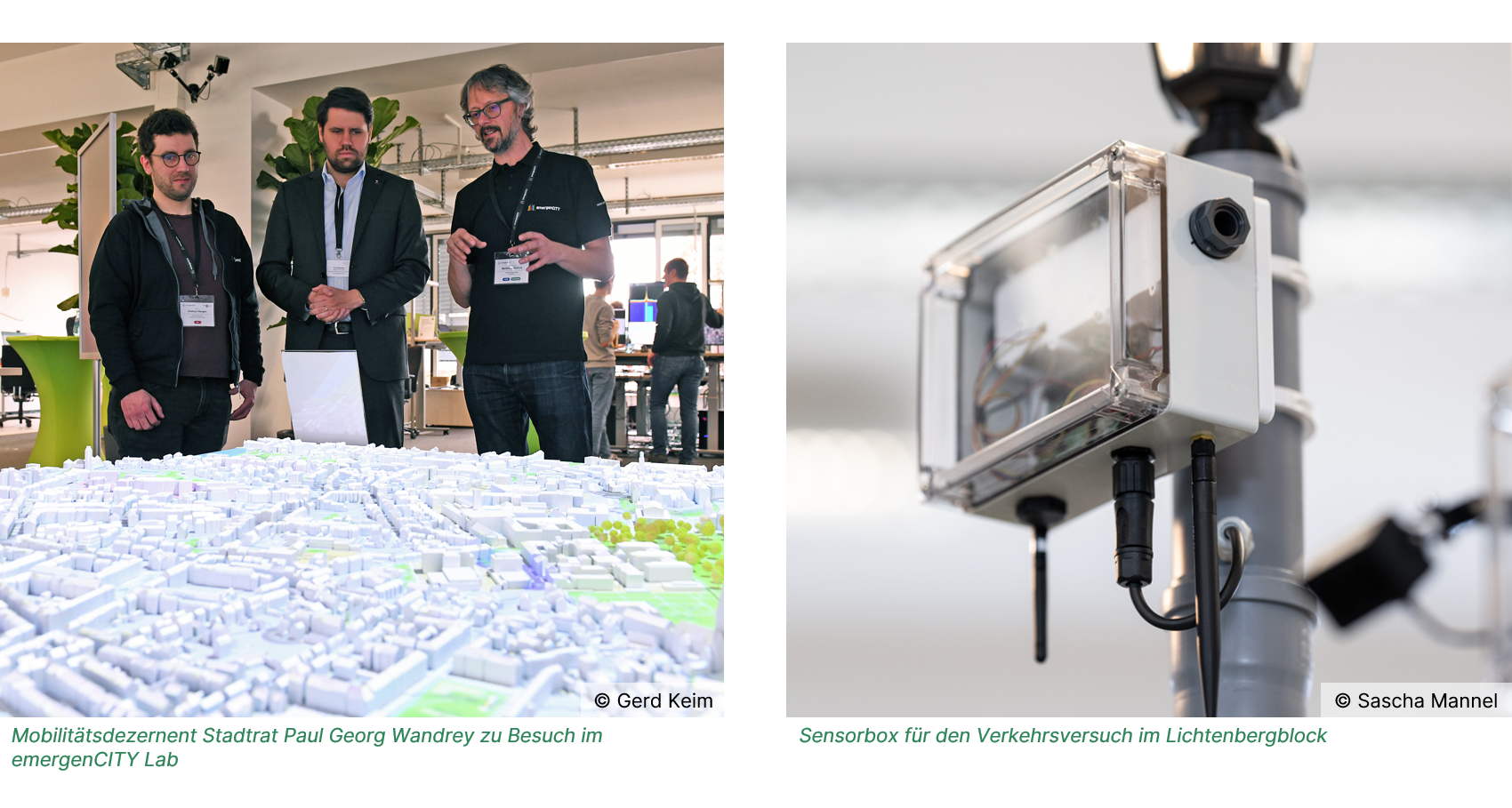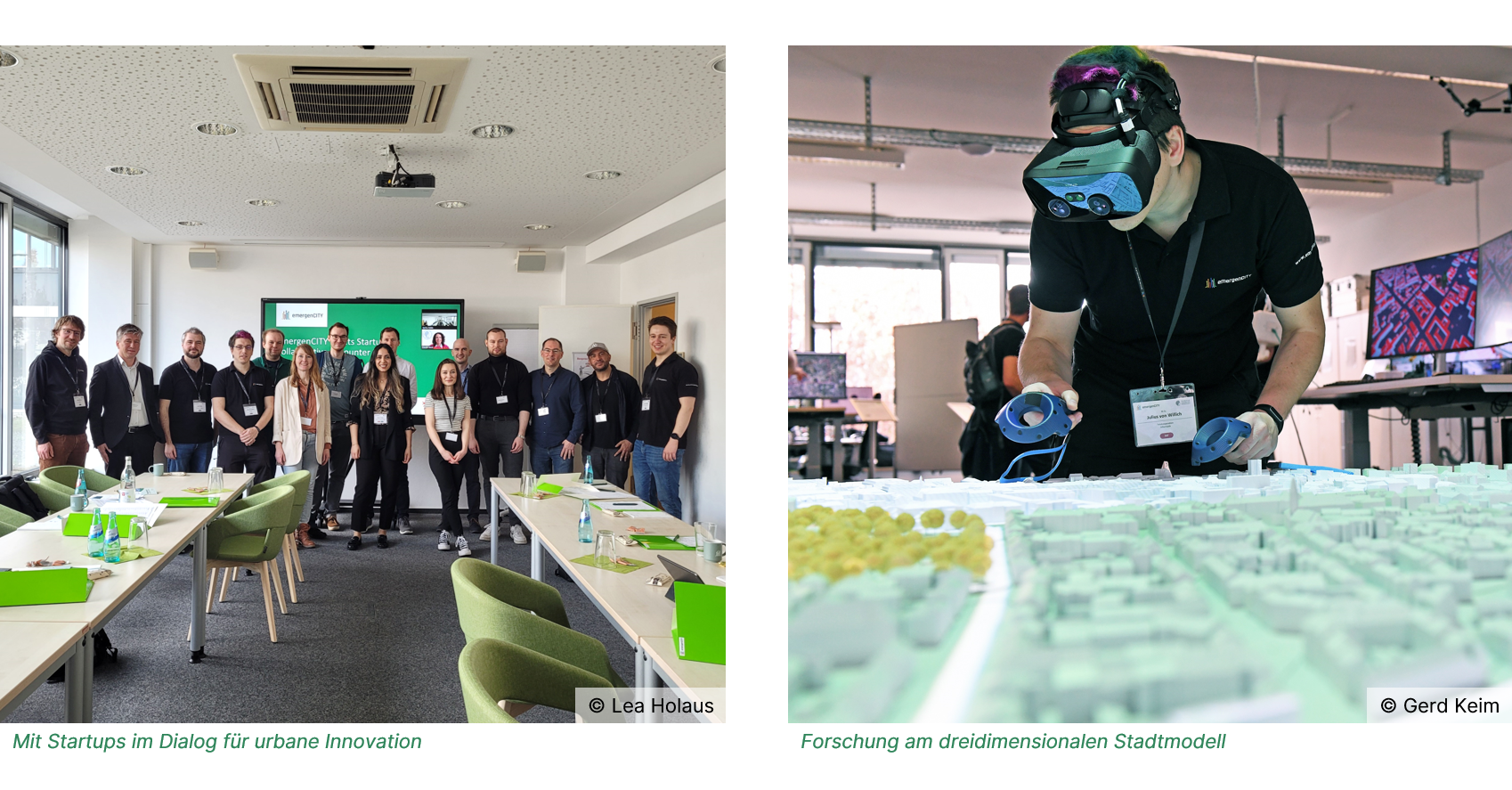Staying Operational in a Crisis
LOEWE-Center emergenCITY presents innovative solutions
LOEWE-Center emergenCITY presents innovative solutions

With the world under constant stress from crises, wars and climate change, it is important to take precautions to be prepared in the event of an emergency. Even in our immediate, seemingly safe environment, when cyber-attacks can cripple infrastructure or floods and other natural disasters can threaten entire regions.
The LOEWE-Center emergenCITY investigates how the functionality of cities with digitally networked infrastructures can be ensured in such extreme situations. Years of interdisciplinary basic research have now led to application-oriented solutions, which were recently presented at an action day in the research laboratory of the TU Darmstadt.
As an associated partner of emergenCITY, the City of Science Darmstadt focused on a digital advertising pillar and sensor boxes, which will be installed as digital solutions in the so-called “Heinerblock” in the Lichtenberg district in the near future. This is not only about the resilience of an urban district, but also about the possible implementation of a more sustainable concept for traffic and land use, which could lead to a better urban climate in the long term. For example, reducing motorized through traffic to a minimum could free up space for human interaction. The research center is supporting the desired transformation process with about 40 sensor boxes that will soon be attached to street lamps in the district to measure the effects of traffic calming on the urban climate. They measure air pollution and noise, for example, as well as the frequency of traffic at selected locations. What they cannot do is surveillance, as no cameras are installed, no audio is recorded, and no personal data is collected.
“This is a great opportunity for the city to advance the district in close cooperation with the TU and the LOEWE Center without incurring any costs for the city for the valuable scientific support and analysis,” emphasized Professor Matthias Hollick, scientific coordinator of emergenCITY. Climate neutrality can be promoted here in an exemplary manner in the interest of the citizens. An additional benefit is that the boxes are also a testing ground for crisis communication, as they could form a kind of WLAN network in an emergency, providing the latest information on the situation. This is also the purpose of the digital Litfaßsäule 4.0, the first of which is being installed at Riegerplatz in cooperation with Ströer Media Deutschland GmbH. As a digital communication unit, it can operate autonomously even in the event of a large-scale power failure and transmit important information to the public.

Paul Georg Wandrey, Darmstadt’s city councilor responsible for mobility, was very interested in the research projects. “I learned a lot,” he said afterwards, confirming that the first phase of the traffic concept for the Lichtenberg district is still to be implemented. Wandrey was pleased that projects such as the Litfaßsäule 4.0, a visible scientific success, will now be put on the road quickly. The head of the mobility department and Professor Hollick also agreed on the added value of the “great treasure trove of data” from the sensor boxes, both for the city and for other scientists.
Like Paul Georg Wandrey, many other guests came to learn about the pioneering developments in the emergenCITY laboratory. The scientists presented mature prototypes as well as new ideas and demonstrators in the development process. These ranged from the impressive rescue robot “Scout”, which can locate buried victims or fire sources in inaccessible areas, to an intelligent loudspeaker for crisis situations and the three-dimensional Darmstadt model for better visualization of the city’s interrelationships. Numerous emergenCITY projects were presented on the question of how to get a quick overview of the situation in a crisis and how to restore communication when all networks fail. Prevention is also an important topic, for example in the detection of weak points in electricity and water networks.

Under the motto “Resilience meets Innovation”, startups from areas such as artificial intelligence, communication networks, robotics and cyber security were also invited to discover all these ideas live at the LOEWE Center and to explore opportunities for cooperation. In a workshop lasting several hours, the projects were presented to each other and discussed how challenges on both sides could be overcome through collaboration. “The exchange was very intense and there were many synergies that generated enthusiasm,” said Hollick. Nearly all participants exchanged contact details, demonstrating the strong interest in collaboration.
Gerd Keim